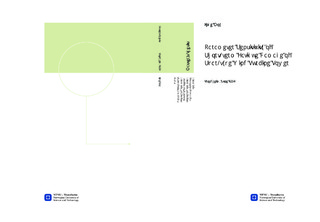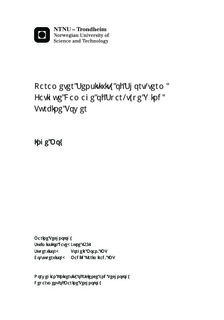| dc.contributor.advisor | Moan, Torgeir | nb_NO |
| dc.contributor.advisor | Karimirad, Madjid | nb_NO |
| dc.contributor.author | Moy, Inge | nb_NO |
| dc.date.accessioned | 2014-12-19T12:07:17Z | |
| dc.date.available | 2014-12-19T12:07:17Z | |
| dc.date.created | 2012-11-08 | nb_NO |
| dc.date.issued | 2012 | nb_NO |
| dc.identifier | 565997 | nb_NO |
| dc.identifier | ntnudaim:7535 | nb_NO |
| dc.identifier.uri | http://hdl.handle.net/11250/238143 | |
| dc.description.abstract | The World s energy demand is rapidly increasing and a good viable renewable energy source is wind power. The land-based knowledge and experience the onshore wind turbine industry possess is used to develop offshore wind turbines. With this knowledge together with the experience and knowledge of the marine industry we can design and produce a floating wind turbine. The main advantages of an offshore wind turbine are that the wind is stronger and less turbulent at sea, visual and noise annoyances can be avoided and there are large available areas at sea. In this thesis coupled time domain analyses of a floating spar-type wind turbine are performed with the intension to study parameters affecting fatigue damage at base of the tower. The software applied is SIMO/Riflex with the extension TDHmill, which gives the wind thrust force and gyro moment on the wind turbine as point loads in the tower top. Short term environment conditions are chosen from a joint distribution of simultaneous wind and waves which is based on measurements from a site in the North Sea in the period 1973 1999. In total 141 different environmental conditions are chosen for the sensitivity study. Mean value, standard deviation, skewness and kurtosis are calculated for axial stresses at the base of the tower. Fatigue damage is calculated from the Palmgren-Miner sum with a nominal stress SN-curve from the DNV fatigue standard. The axial stress-cycle distribution used in the Palmgren-Miner sum is found by rainflow counting. Time domain simulations are carried out for the different sea states and fatigue damage is calculated for each case. The statistical properties and fatigue damage are averaged over seven samples with different random seed number to ensure acceptable statistical uncertainty. Accumulated standard deviation shows that 5 samples of each load case are sufficient to ensure acceptable statistical uncertainty. Sensitivity study of different simulation length shows that 30 minute simulations give close to equal fatigue damage and standard deviation as 2.5 hour simulations. Sensitivity of fatigue to wave height and peak period is carried out to study the effect of varying parameters. This study suggests that the highest waves dominate the fatigue damage for the smallest peak periods. For some small wave heights the damage will be constant for a given peak period range. From this sensitivity study it is shown that if the deviation of fatigue damage between the different load cases is small, then the dominating load case of the accumulated long term fatigue damage will be dominated by the marginal probability of each load case. | nb_NO |
| dc.language | eng | nb_NO |
| dc.publisher | Institutt for marin teknikk | nb_NO |
| dc.subject | ntnudaim:7535 | no_NO |
| dc.subject | MTMART Marin teknikk | no_NO |
| dc.subject | Marin hydrodynamikk | no_NO |
| dc.title | Parameter Sensitivity of Short-term Fatigue Damage of Spar-type Wind Turbine Tower | nb_NO |
| dc.type | Master thesis | nb_NO |
| dc.source.pagenumber | 119 | nb_NO |
| dc.contributor.department | Norges teknisk-naturvitenskapelige universitet, Fakultet for ingeniørvitenskap og teknologi, Institutt for marin teknikk | nb_NO |

